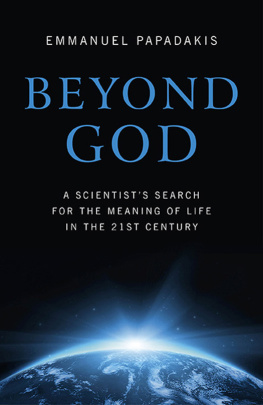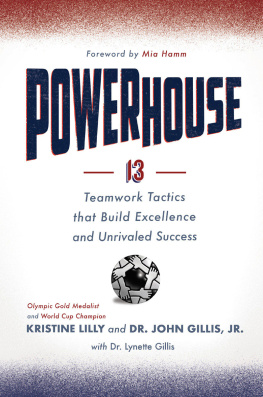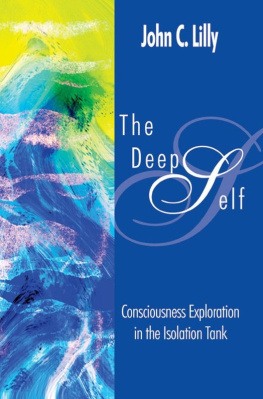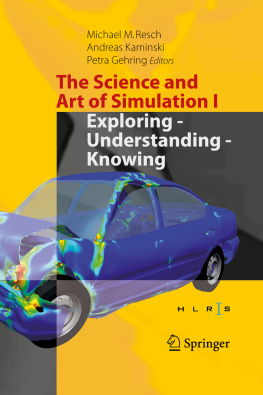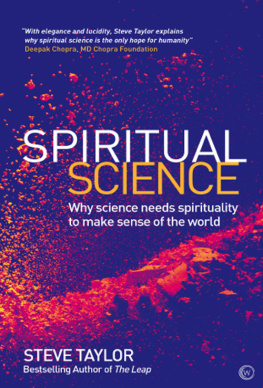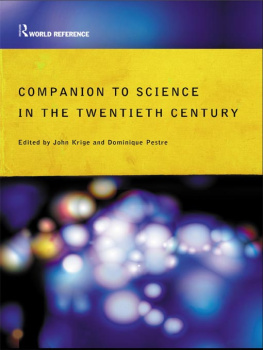
John Lilly Books
Published by RONIN
The Quiet Center
The Scientist
Metaphysical Autobiography
Programming the Human BioComputer
Center of the Cyclone
The Steersman
Metabeliefs & Self-Navigation

Simulations of God
The Science of Belief
Copyright 1956, 1960, 1961, 1975 by John C. Lilly, M.D.
Copyright 2012 by The Estate of Dr. John C. Lilly
ISBN: 978-1-57951-146-3
Published by
RONIN Publishing, Inc.
PO Box 22900
Oakland, CA 94609
www.roninpub.com
All rights reserved. No part of this work may be reproduced or transmitted in any form by any means electronic or mechanical, including photocopying recording or translating into another language, or by any information storage or retrieval system, without written permission from the author or the publisher, except for inclusion of brief quotations in a review.
Design Credit:
Cover Design: Brian Groppe BrianGroppe.com
Library of Congress Card Number: 2012940463
Distributed to the book trade by PGW/Perseus
DEDICATION
To Franklin Merrel-Wolff, the author of Pathways Through to Space and Consciousness Without an Object, whose work inspired this study and its publication.
ACKOWLEDGEMENT
Many thanks to Mary Louise Lilly, C. Scott Taylor, Barbara Clarke Lilly, Dr. Michael Hyson and Star Newland at planetpuna.com, Roberta Quist Goodman at wilddolphinswimshawaii.com (with a book coming soon), The Bailey, Jensen, and Musser families, Ann and Jerry Moss, and Lucy and Patrica Casado of the El Adobe Caf.
The person one loves never really exists, but is a projection focused through the lens of the mind onto whatever screen it fits with least distortion.
Arthur C. Clarke
Tales of Ten Worlds
TABLE OF CONTENTS
Simulations of God completes the cycle of inquiry first sought by Dr. Lilly, at the age of 16, when he wrote a research paper entitled, What Is Reality? The precocious youth, nicknamed by his classmates, Einstein Junior, went on to become the Section Chief, Section on Cortical Integration, at the National Institute of Neurological Diseases and Blindness and the National Institute of Mental Health, Bethesda, Maryland (1953-1958). The writing, herein, explores the psychological, sociological, economic and religious themes that we, as humans, continue to apply as constructs to our modern lives.
In 2012, The New York Times, in its review of D. Graham Burnetts The Sounding of The Whale, pointed out that Lillys Freedom of Information Act file revealed that the former Director of The Federal Bureau of Investigation, J. Edgar Hoover, kept a personal copy of Lillys intelligence dossier within his private office files. Lillys research on the human mind during the Cold War Era held significant importance within the elite military and governmental power structures of the United States of America. When the inaugural search for extra-terrestrial intelligence was launched by the National Aeronautics Space Administration, the assignment was given to Lilly, in an attempt to bridge the language barriers between humans and potential alien species. The resultant interspecies communication experiments between humans and dolphins in Florida, the Virgin Islands, and California have taken on mythic qualities in the cultural history of the late 20th century.
Lilly conceived the ideas for Simulations of God after a lifetime in academic and laboratory settings. With Simulations of God, Lilly attempts to identify the simulations of cultural human programming events into modern settings, as they affect perceptions in consciousness. Lilly saw Simulations of God as a clarification of his scientific observations over the previous 40 years.
In a more halcyon time, in the foothills of Southern California, Timothy Leary, Lillys long time friend, expressed to me that the three greatest ideas of the 20th Century were: Dr. Benjamin Spocks concept that parents should treat their children as they would treat themselves; Marshal McLuhans famous dictum The medium is the message; and John Lillys magnum opus Programming and Meta-programming in the Human Bio-Computer. Simulations of God furthers the concepts laid forth within that text in a popular analysis, allowing the reader to think anew of how these thought processes are applied to human consciousness in a grand overview.
The Preface to this new edition is contributed by Dr. Lillys esteemed colleague, Dr. Michael Hyson. He continues to be inspired by Johns research, and seeks to take it in new directions in the Hawaiian Islands. Dr. Hyson was inspired when he read Dr. Lillys book Man and Dolphin when he was 13 and went to live near a pod dolphins in Texas at the age of 14. He studied biology and neuroscience at the University of Miami, swam with one of the original Flipper dolphins, and later worked with Dr. Hank Truby, a linguist who had worked with Lilly teaching the dolphins English. Trubys World Dolphin Foundation worked with the dolphins Florida and Liberty and Michael befriended them. After a dolphin time-out working with CalTech, NASA, JPL, and two private rocket companies, he met Star Newland at Lillys 75th birthday celebration in 1990. Star founded the Sirius Institute and Michael became its research director. They have been researching dolphins, gentle birth, and space related topics in Hawaii for the last 20 years. See: www.planetpuna.com/hyson for more details.
The Foreword is written by C. Scott Taylor, a doctoral candidate, lecturer and research associate at the University of the Sunshine Coast, Australia. After years of studying Johns work, Taylor felt a strong connection to the idea of the Cetacean Nation and sought out John to see if there were ways he could support its development. He and John shared the stage at an international conference, talking about the idea. Over time, Scotts interest in Johns work led to a close connection to his archives, an untapped resource for the establishment of a holistic database for educating future human interspecies ambassadors. Scott and John enjoyed sharing ideas about the project that John referred to as his most important legacy. John nominated Scott to be a global ambassador for the Cetacean Nation, a role Scott hopes someday to take on. See www.dolphinembassy.blogspot.com for more information.
Philip Hansen Bailey,
President, John C. Lilly Research Institute,
Los Angeles, California, May 30, 2012.
I am honored to write this preface. How can I encompass the vast effect that the work of Dr. John C. Lilly had on my life? Im certain than anyone who is interested and reads his works will learn a great deal and think about many things in a new way. I hope that all of Dr. Lillys works remain in print and available so future generations can be better educated, more enlightened, and with a solid knowledge of their makeup.
Next page

